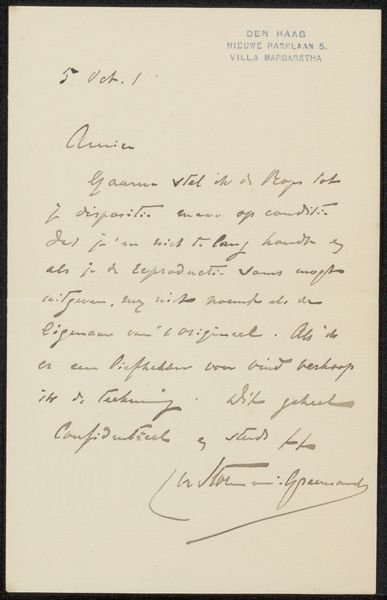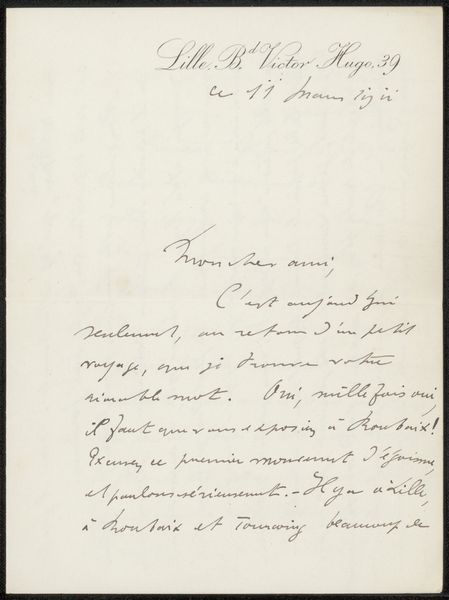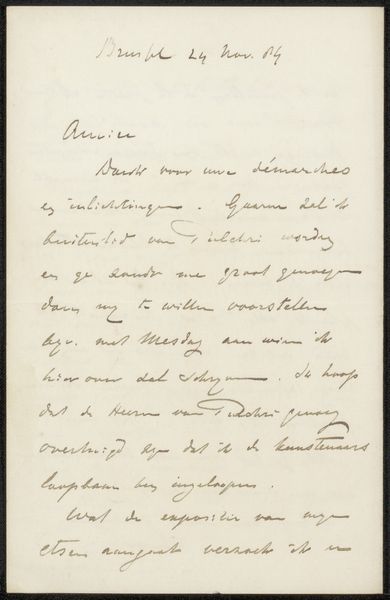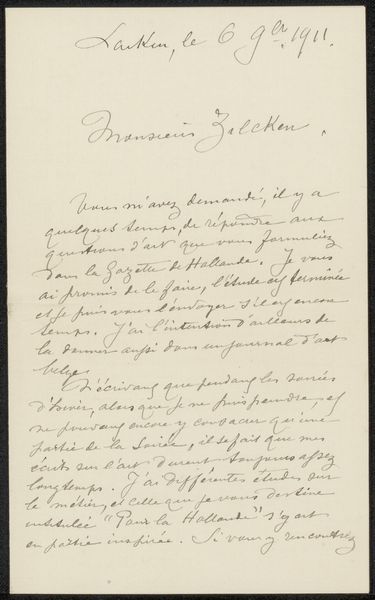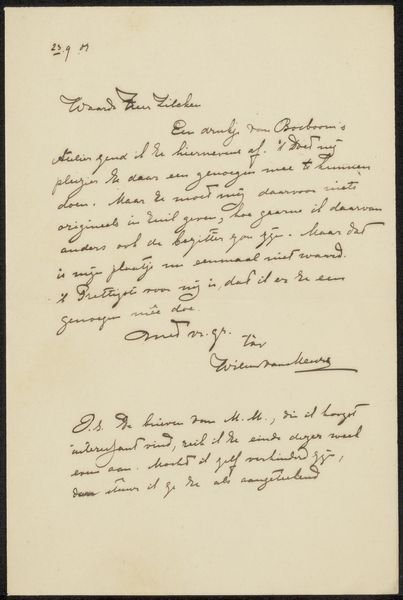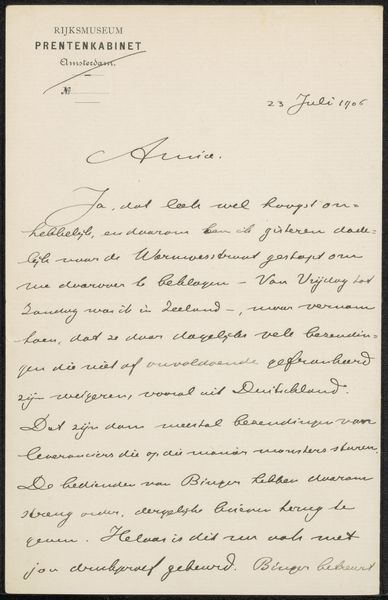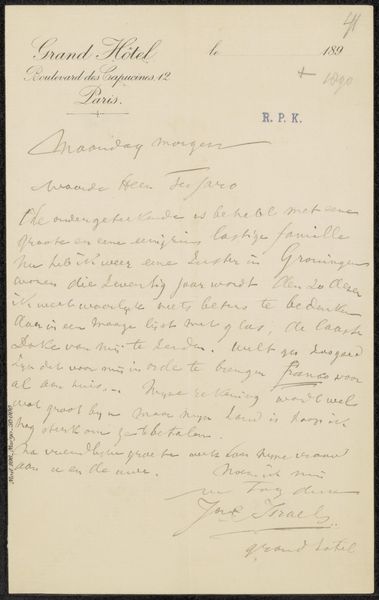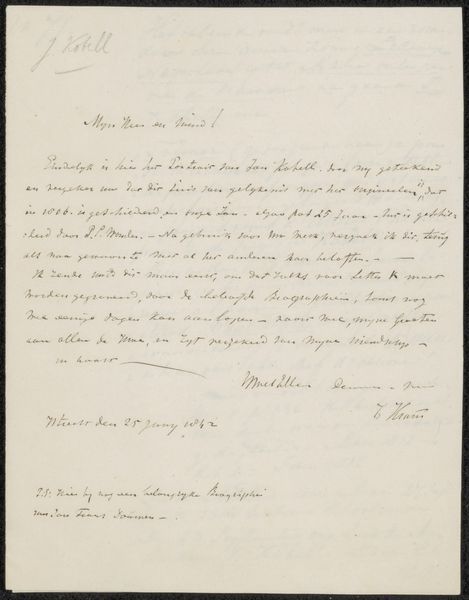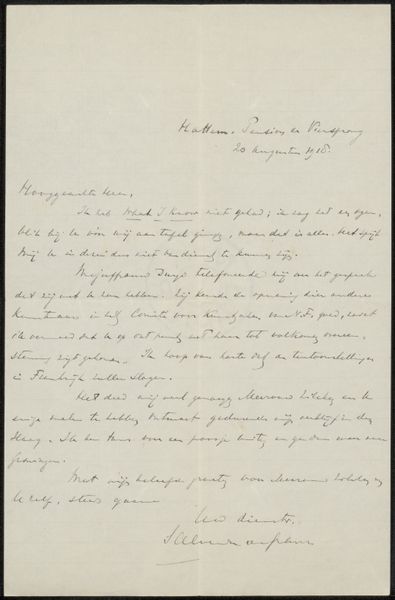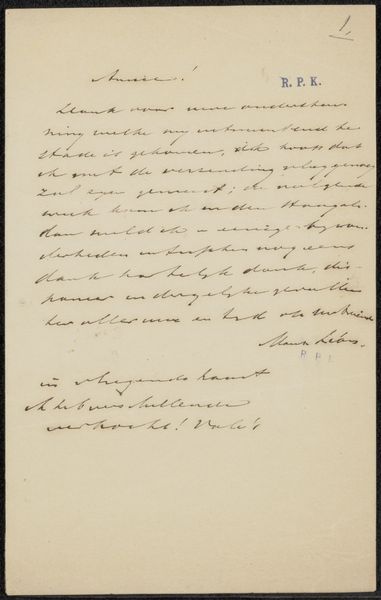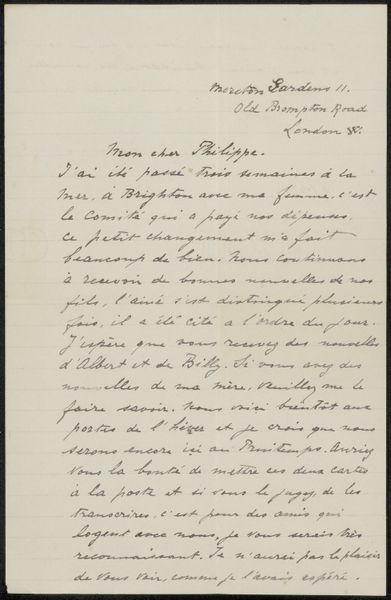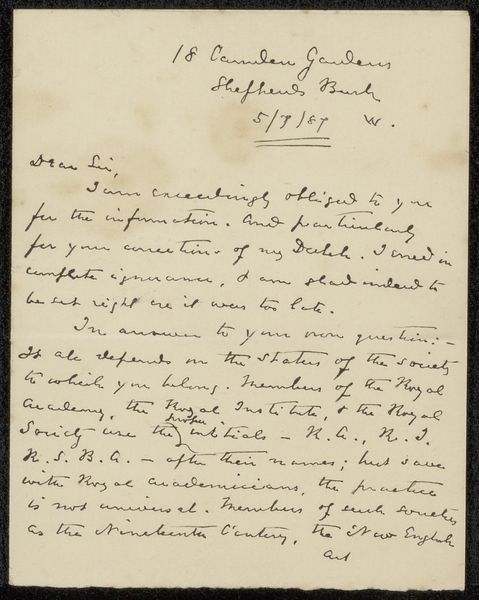
drawing, paper, typography, ink, pen
#
portrait
#
drawing
#
pen sketch
#
hand drawn type
#
paper
#
typography
#
ink
#
pen-ink sketch
#
pen work
#
pen
#
calligraphy
Copyright: Rijks Museum: Open Domain
Editor: This is a fascinating piece, titled "Brief aan Andries Bonger," created sometime between 1871 and 1936 by C. Destree. It's a drawing, mostly ink on paper, with a handwritten script. The script gives it an intimate and personal feel, almost like peering into someone's private thoughts. What do you see in this work, particularly as it exists beyond its textual meaning? Curator: What strikes me immediately is the enduring power of the handwritten word. Even divorced from its direct communicative purpose, the script carries immense cultural and psychological weight. Calligraphy, in many cultures, including Western traditions, was not just about transmitting information; it was about the act of creation, imbued with the personality of the writer. Editor: That's a great point, its "personality". Curator: Indeed. Consider the penmanship itself. The loops, the slants, the pressure applied. They reveal character, intention, a sense of urgency or leisure. Look closely, and you may discern a connection to similar historical documents. Do the forms of address carry meaning, or evoke social expectations of the period? The arrangement of the text is another layer – how does the negative space contribute to the overall impact? Is it balanced, formal, chaotic, expressive? Editor: It feels almost casual. A lot less "serious" compared to modern-day typeface. Curator: Perhaps that’s due to our contemporary relationship to digital forms. Handwriting is less often a tool, but more an art or memory object today. Do you see in the artifact an essence of humanity which is being lost, as cultural continuity frays? Editor: Yes, I think there's a genuine human element, both fragile and resolute. Looking at the piece, the idea of written forms beyond standardized font does feel unique and powerful. Curator: Precisely. We learn about ways of writing itself and how much of that affects the mood that the artifact is portraying. It holds the unique history, psychology, or values. It creates its own distinct culture and can also transcend mere literal communication.
Comments
No comments
Be the first to comment and join the conversation on the ultimate creative platform.
